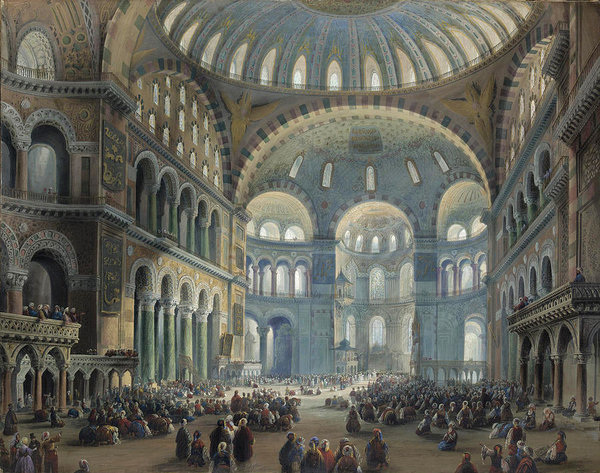Hagia Sophia (from Greek Αγία Σοφία) means Holy Wisdom.
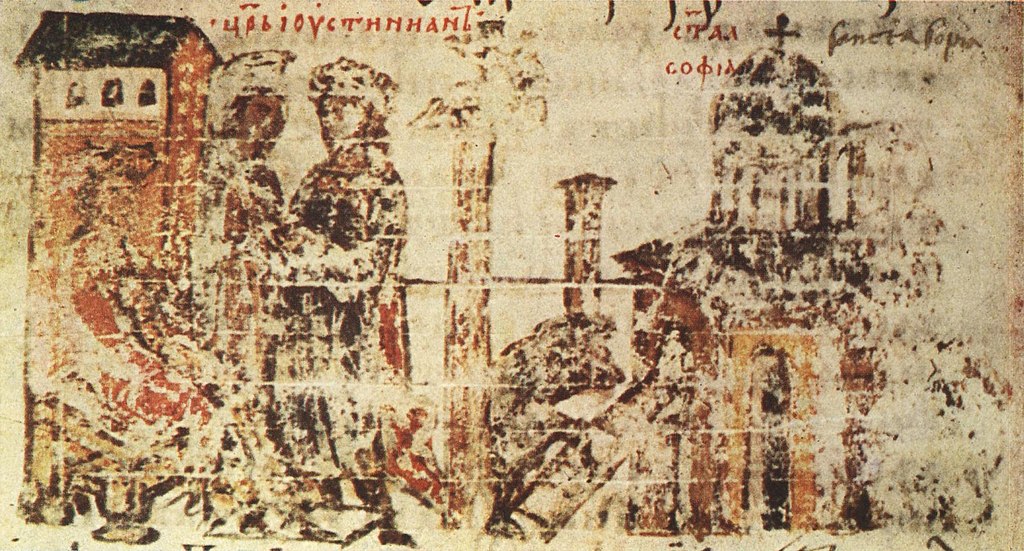

Here is a timeline of this iconic living heritage of world that has served from being a Greek Orthodox Christian patriarchal cathedral – to- A Roman Catholic cathedral –to- An Ottoman mosque –to- A Museum – to finally becoming -A Mosque, since its erection in 537 AD till today.
If we take its first official consecration as a Cathedral, then it existed during the lifetime of the Prophet Muhammad (ﷺ). At that time it was the largest interior space in the world.
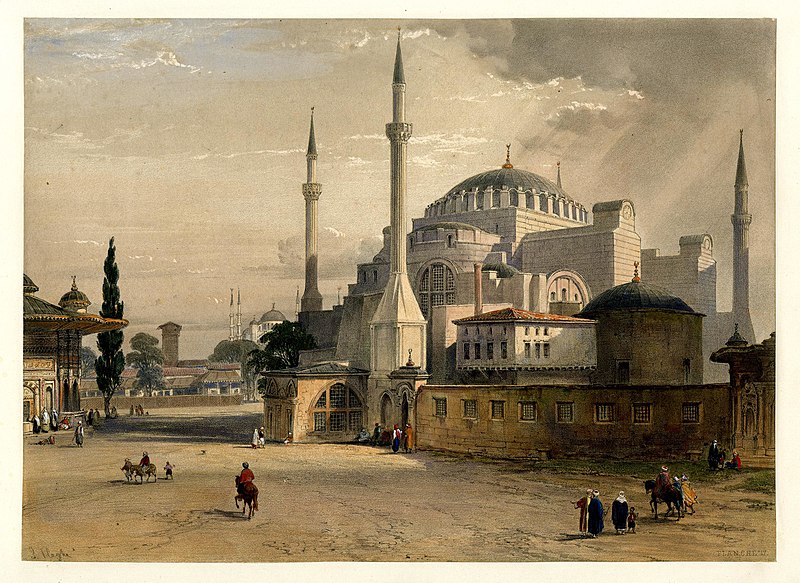
In 360 AD, according to early accounts, the first Hagia Sophia was built on the site of an ancient pagan temple. The church was consecrated on 15 February 360, during the reign of the emperor Constantius II (r. 337–361).
In June 404 AD, during the riots, this first church was largely burnt down.
In 415 AD, a second church on the site was ordered by Theodosius II (r. 401–450), who inaugurated it on 10 October 415.
In 532 AD, a fire started during the tumult of the Nika Revolt, the second Hagia Sophia too was burnt to the ground on 13–14 January 532.
On 23 February 532 AD, only a few weeks after the destruction of the second basilica, Emperor Justinian I decided to build a third and entirely different basilica.
In 537 AD, the Justinian and Patriarch Menas, inaugurated the new basilica on 27 December 537 – 5 years and 10 months after the construction had started.
In 726, the Emperor Leo the Isaurian issued a series of edicts against the veneration of images, ordering the army to destroy all icons inside the church.
In 1203 AD, According to the Greek historian Niketas Choniates during the Fourth Crusade, the emperors Isaac II Angelos and Alexios IV Angelos stripped Hagia Sophia of all the gold ornaments and all the silver oil-lamps in order to pay off the Crusaders who had ousted Alexios III Angelos and helped Isaac return to the throne.
In 1204 AD during the Sack of Constantinople, the church was further ransacked and desecrated by the Crusaders, its altar was smashed into pieces, and a “woman laden with sins” sang and danced on the synthronon. Mules and donkeys were brought into the cathedral’s sanctuary to carry away the valuables. According to Ali ibn al-Asir, the Crusaders massacred some clerics who had surrendered to them.
From 1204-1261 AD, during the Latin occupation of Constantinople (1204–1261) the church became a Roman Catholic cathedral.
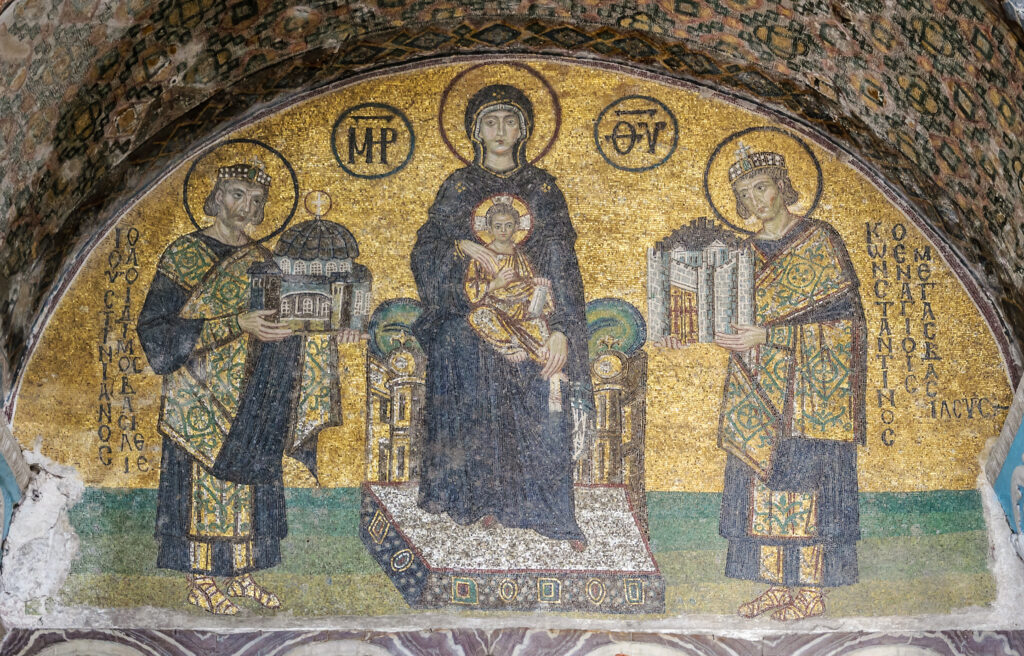
The Virgin Mary is standing in the middle, holding the Child Christ on her lap. On her right side stands emperor Justinian I, offering a model of the Hagia Sophia. On her left, emperor Constantine I, presenting a model of the city. Pic Source: Wiki Images
In 1453 AD, the Constantinople fell to the attacking Ottoman forces. On 23 May 1453 AD, when Sultan Muhammad and his entourage entered the church, he ordered that it be converted into a mosque. An Aalim (Islamic cleric) climbed onto the church’s ambo and recited the shahadat.
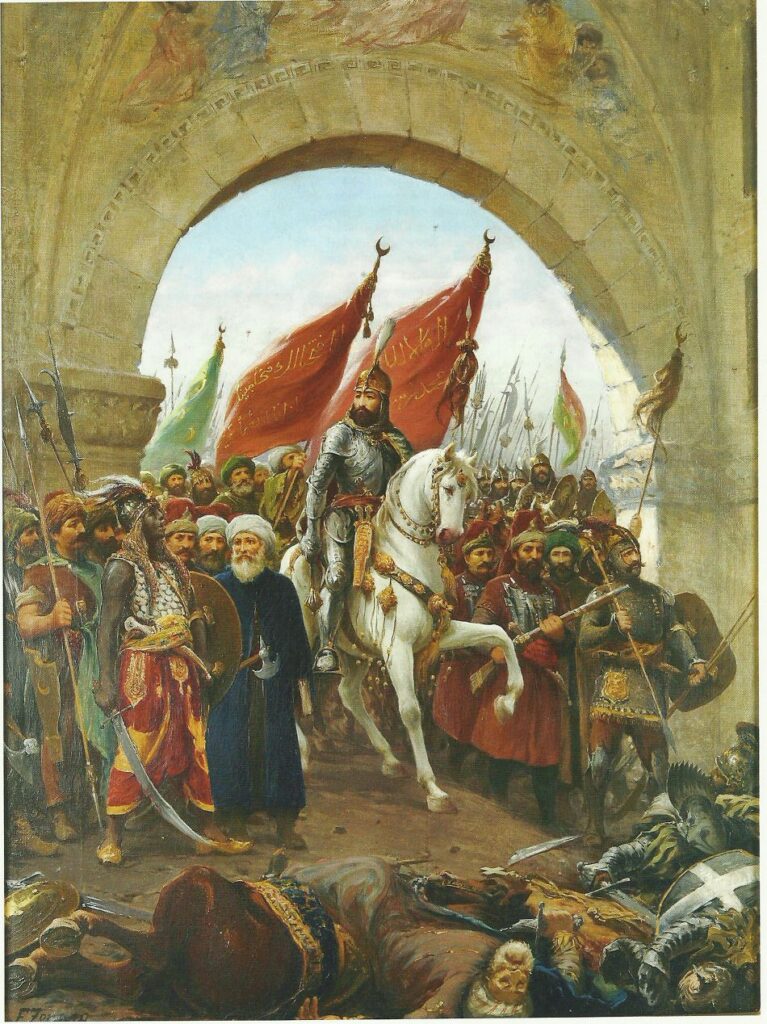
The church was in a dilapidated state, with several of its doors fallen from their hinges; Sultan Muhammad ordered a renovation of the building. Sultan attended the first Friday prayer in the mosque on 1 June 1453 . This action marked the official conversion of Aya Sofya became the first imperial mosque of Istanbul.
1462 years after the conquest, Sultan Mehmet established the charity foundation for the development of Hagia Sophia and dedicated 14000 gold coins as an annual income from various sources to the foundation. It is reported that he bought the entire land and entrusted it to the endowment (Waqf ).
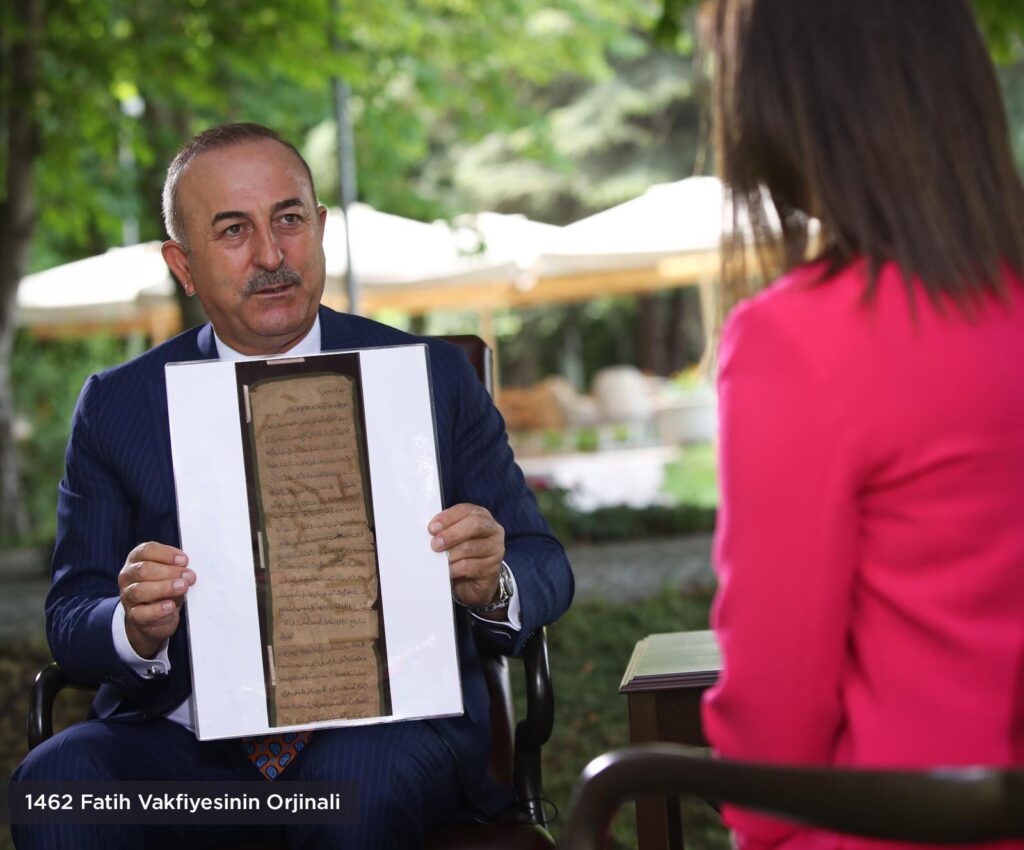
From 1478 AD, the Waqf endowments that included 2,360 shops, 1,300 houses, 4 caravanserais, 30 boza shops, and 23 shops of sheep heads and trotters gave their income to the foundation.
In 1849 AD- The restorations were carried out regularly to maintain the large structure from time to time during the Ottoman reign. However The last major restoration was ordered by Sultan Abdu Majid I (r. 1823–1861) and completed by eight hundred workers between 1847 and 1849, under the supervision of the Swiss-Italian architect brothers Gaspare and Giuseppe Fossati.
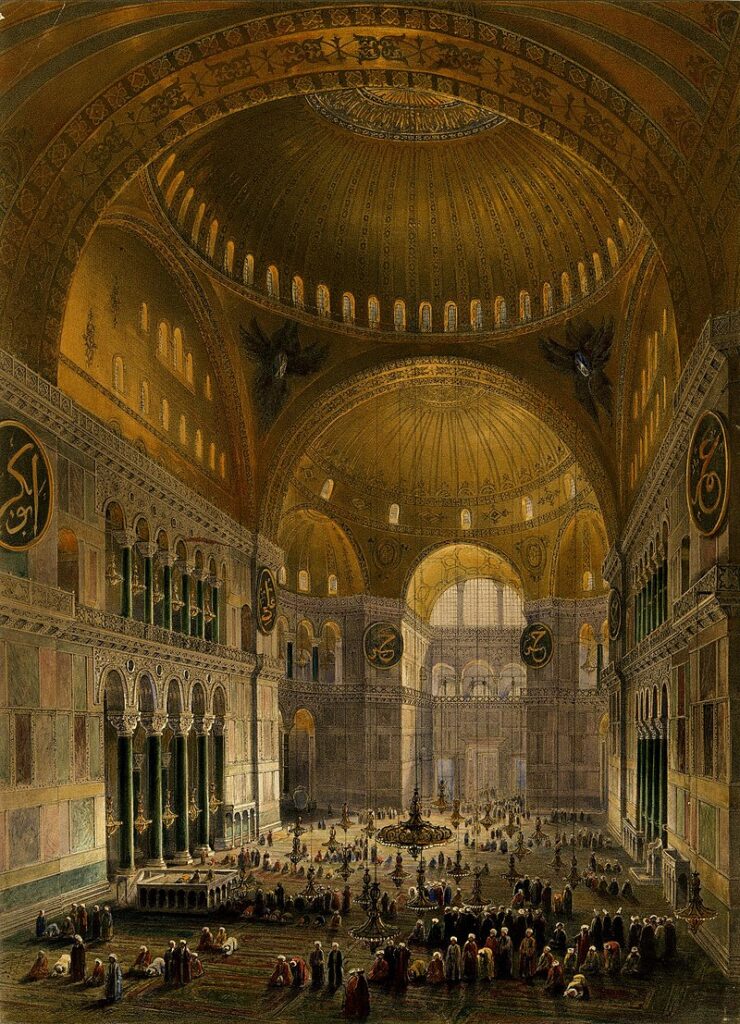

In 1924 AD, the Caliphate was abolished. In 1925, the turban and fez were banned in Turkey.
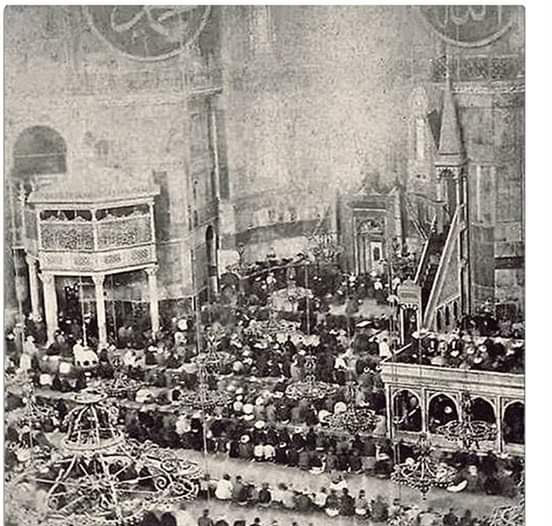
In 1928 AD, To write Turkish alphabets in Arabic was prohibited to be replaced with the Latin alphabet. The Hijab was looked down on and discouraged. Ulama were detained. Madrasahs were closed down. Sufi zawiyas and awliya were targeted.
In 1932 AD, the new regime prohibited the Azan from being called out in Arabic and it was replaced with a Turkish translation – this continued for 18 more years.
In 1935 AD, the Hagia Sophia was converted into a museum after it had been established as a Masjid for almost 500 years.
In 1991 AD while use of the complex as a place of worship (mosque or church) was strictly prohibited, the Turkish government allowed the allocation of a pavilion in the museum complex (Ayasofya Müzesi Hünkar Kasrı’nda) to be used as a prayer room.
In 2007 AD, Greek American politician Chris Spirou launched an international organization “Free Agia Sophia Council” championing the cause of restoring the building to its original function as a Christian church.
In 2013 AD, two of the museum′s minarets started voicing the call to prayer (the Azan) regularly.
On 1 July 2016 AD, Muslim prayers were held in the Hagia Sophia for the first time in 85 years.
In October 2016 AD, Turkey’s Directorate of Religious Affairs (Diyanet) appointed, for the first time in 81 years, a designated imam, Önder Soy, to the Hagia Sofia mosque (Ayasofya Camii Hünkar Kasrı’nda), located at the Hünkâr Kasrı, a pavilion for the sultans’ private ablutions. Since then, the adhan has been regularly called out from the Hagia Sophia′s all four minarets five times a day.
On 10 July 2020 AD, the decision of the Council of Ministers to transform the Hagia Sophia into a museum was cancelled by the Council of State, decreeing that Hagia Sophia can be used only as a mosque and not for any other purpose. A presidential spokesperson said it would become a working mosque, open to anyone similar to the Parisian churches Sacré-Cœur and Notre-Dame.
The spokesperson also said that the change would not affect the status of the Hagia Sophia as a UNESCO World Heritage site, and that “Christian icons” within it would continue to be protected. The mosque opened for Friday prayers on 24 July, White drapes covered the mosaics of the Virgin and Child in the apse.
Then Ali Erbaş, the head of Turkey’s Presidency of Religious Affairs (Diyanet), went up to the pulpit with a sword and read out the Friday sermon, or khutbah. Delivering his sermon, he proclaimed: “Sultan Muhammad the Conqueror dedicated this magnificent construction to believers to remain a mosque until the Day of Resurrection“.
The ritual of reading the khutbah with a sword, which is a tradition dated to the Ottoman era, The sword held in the left hand, like in the sermon, aims to give confidence to the allies. As the Ottoman ‘Conquest‘ tradition, two green banners were hung on the pulpit of the mosque as a symbol of conquest and a sword was placed on the right entrance side of the pulpit.
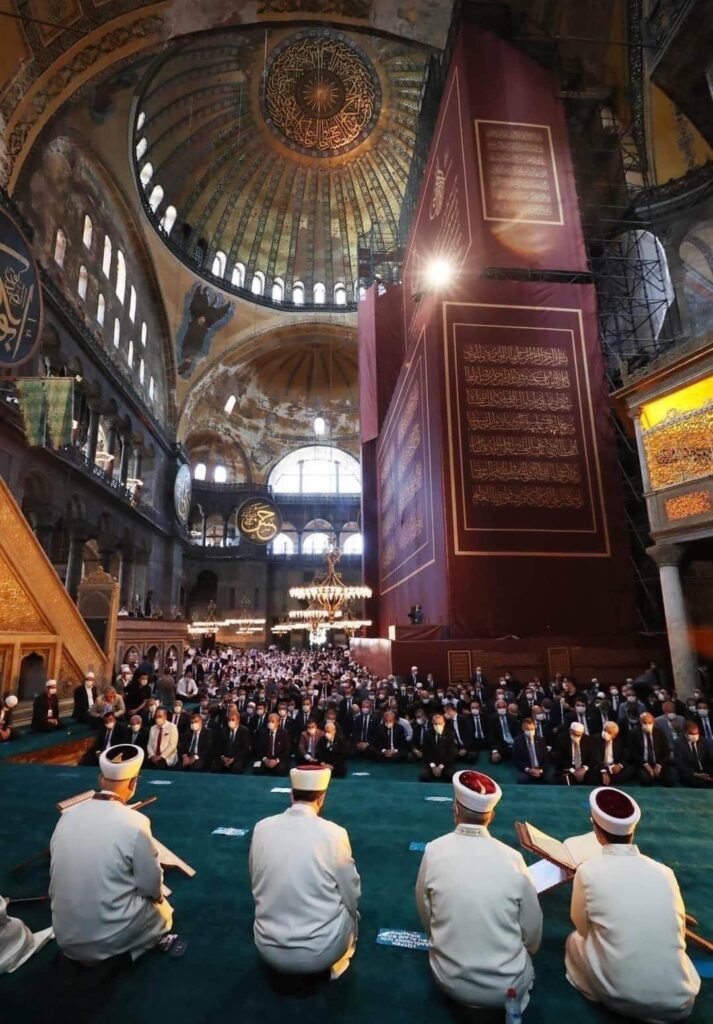
Nalhan Usman, the granddaughter of the last caliph of the Ottoman Caliphate, Sultan Abdul Hamid II, also came on this historic occasion and was present at the Sofia Mosque for Friday prayers.
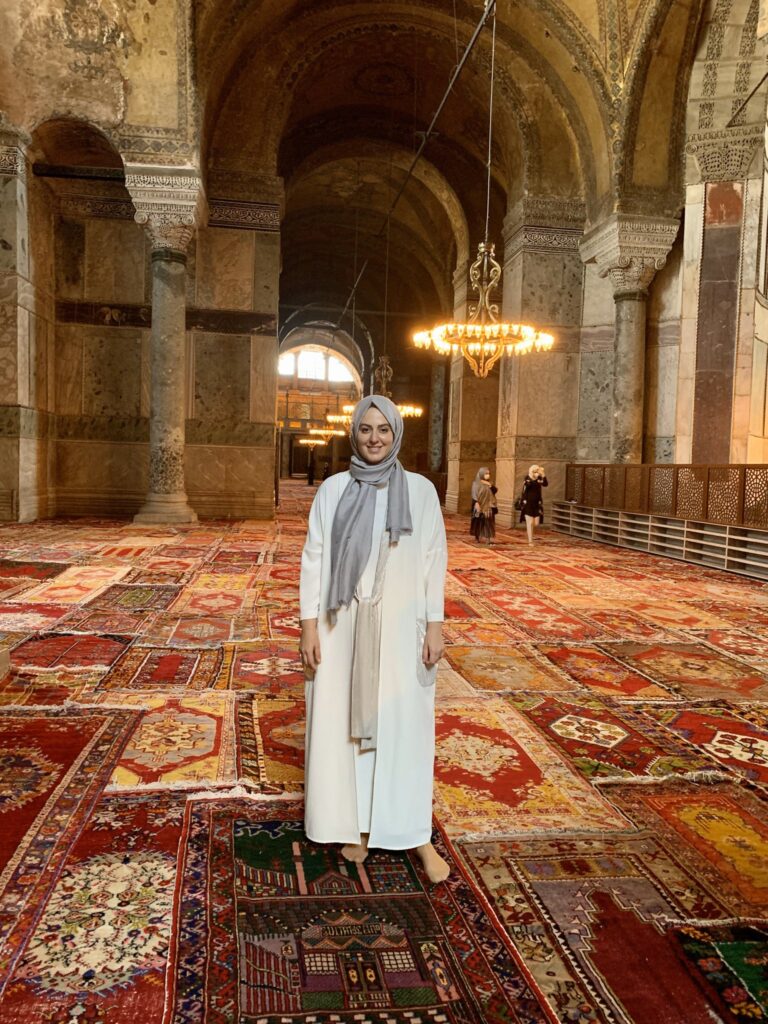
Nelhan Osmanoglu , the great grand daughter of Khalifa Abdul Hameed II.Hagia Sophia served as a church for 916 years until the conquest of Istanbul, and a mosque from 1453 to 1934 nearly 500 years and most recently as a museum for 85 years.
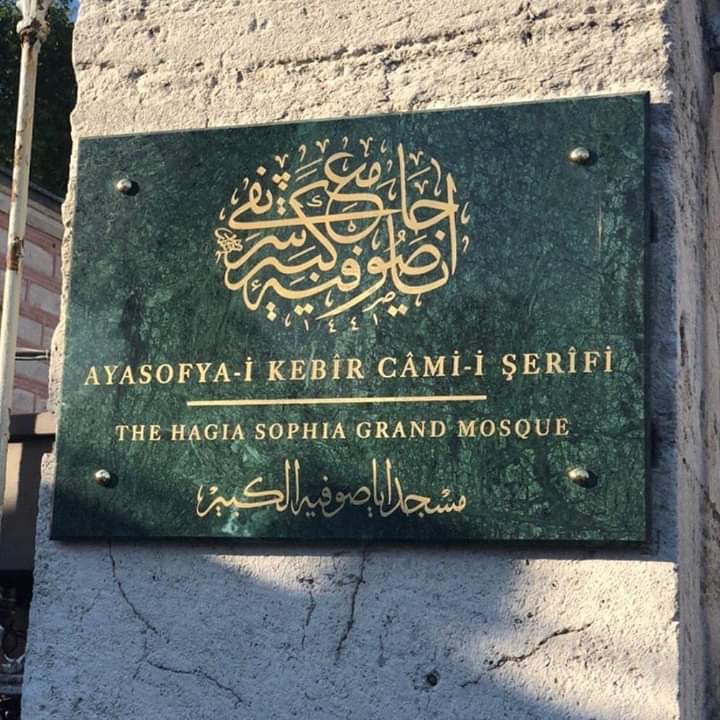
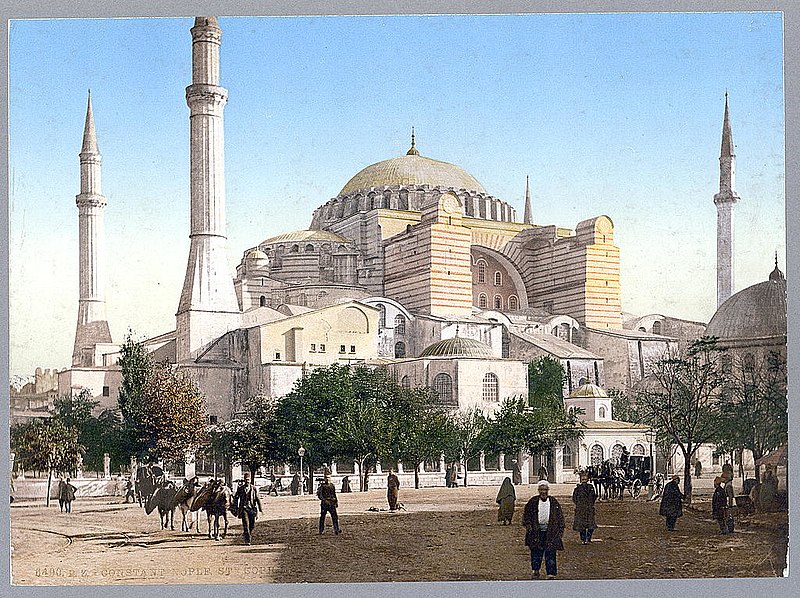
References
- The Buildings of Procopius. Loeb Classical Library. 1940.
- Dark, Ken R.; Kostenec, Jan (2019). Hagia Sophia in Context: An Archaeological Re-examination of the Cathedral of Byzantine Constantinople
- Dark, Ken R.; Kostenec, Jan (2019). Hagia Sophia in Context: An Archaeological Re-examination of the Cathedral of Byzantine Constantinople. Oxford
- City of Byzantium: Annals of Niketas Choniatēs. Translated by Magoulias, Harry J. Wayne State University Press
- Encyclopædia Britannica
- Mainstone, Rowland J. (1997) [1988]. Hagia Sophia: Architecture, Structure and Liturgy of Justinian’s Great Church. London
- Binns, John (2002). An Introduction to the Christian Orthodox Churches. Cambridge University Press.
- Krautheimer, Richard (1986). Early Christian and Byzantine Architecture (4th ed.). New Haven and London: Yale University Press
- Mamboury, Ernest (1953). The Tourists’ Istanbul. Istanbul: Çituri Biraderler Basımevi.
Khalid Bin Umar is a history buff who writes on Micro-history, Heritage, Sufism & Biographical accounts. His stories and articles has been published in many leading magazines. Well versed in English, Hindi, Urdu & Persian, his reading list covers a vast arrays of titles in Tasawwuf & Oriental history. He is also documenting lesser known Sufi saints of India

